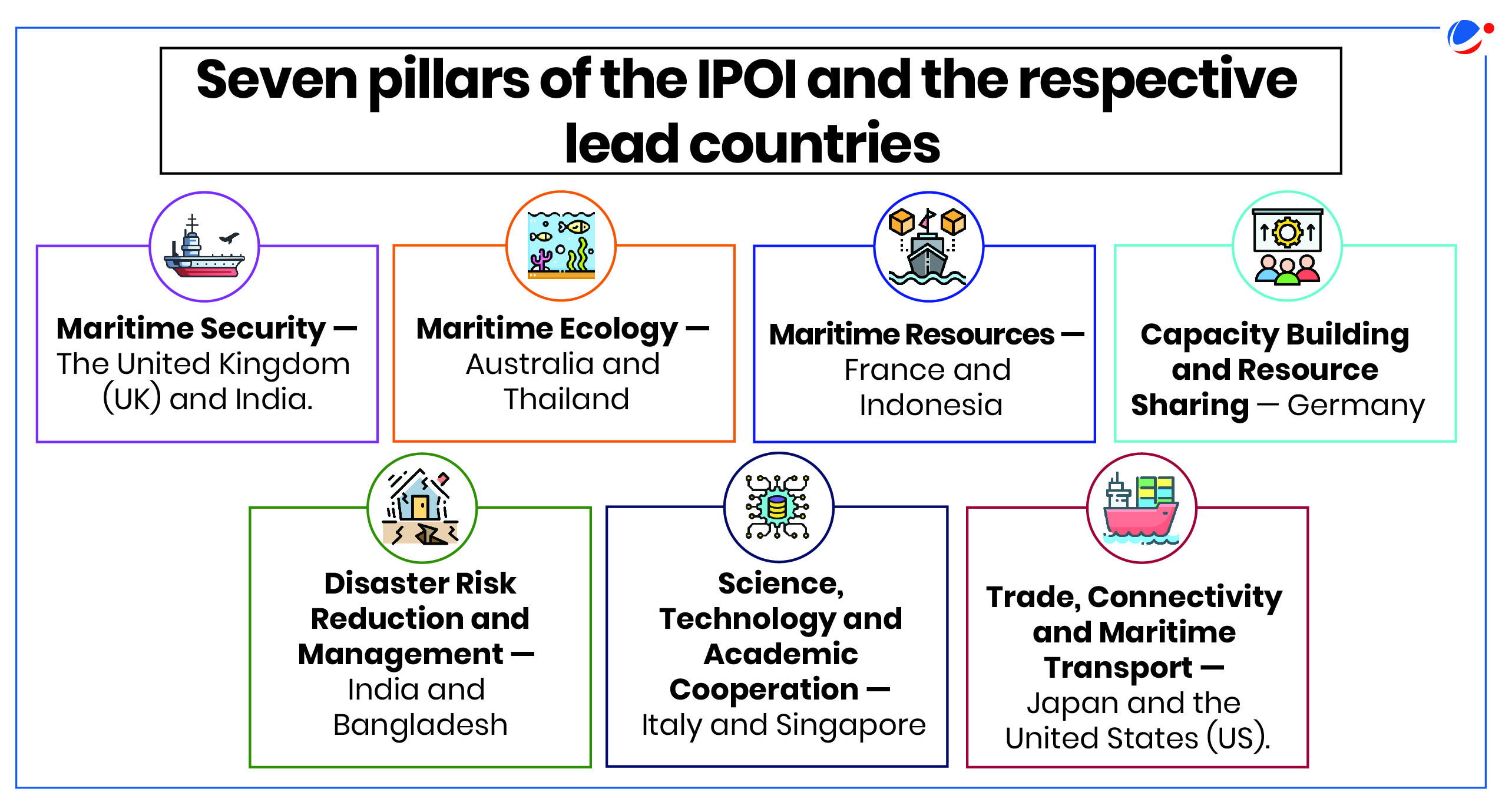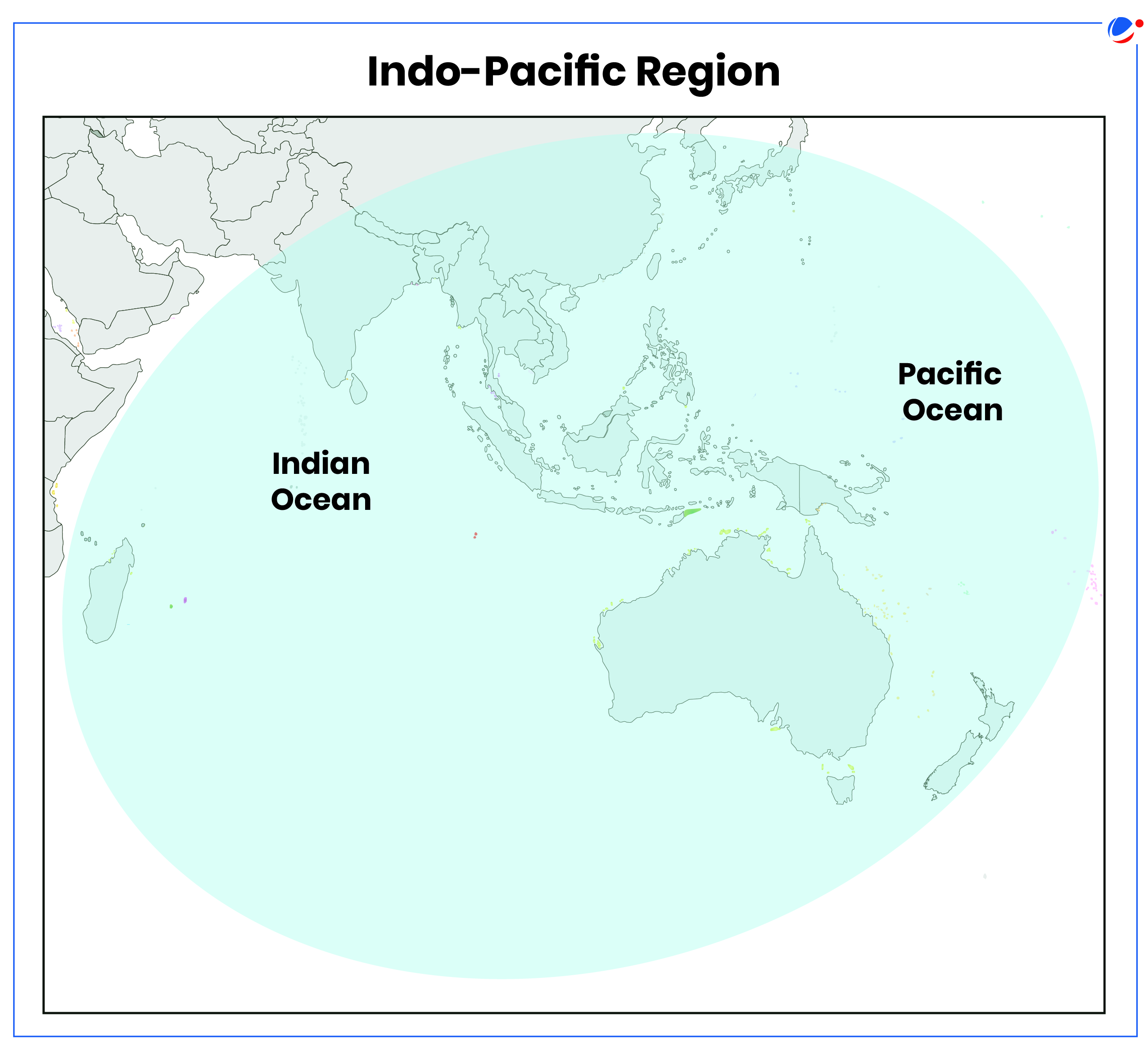Why in the News?
The Indo-Pacific Oceans Initiative (IPOI) completes 5 years.
About the Indo-Pacific Oceans Initiative (IPOI)
- It is a non-treaty-based voluntary arrangement that promotes cooperation for a free and open Indo-Pacific and the rules-based regional order.
- Genesis: It was launched by India in 2019 at the East Asia Summit (EAS) in Bangkok (Thailand).
- Aim: It seeks to build a sense of community by creating new partnerships with like-minded countries through practical cooperation.
- Philosophy: Builds upon India's 'Security and Growth for All in the Region (SAGAR)' initiative of 2015.
- SAGAR vision is to have inclusive development joining economic assistance and maritime security concerns on a common platform while respecting international maritime laws and norms.

What Is the Indo-Pacific? |

|
Significance of the Indo-Pacific Ocean Initiative (IPOI)
- Strategic Relevance: It widens the scope of the Indo-Pacific narrative beyond traditional security and geopolitical challenges to include economic, development and environmental challenges in the maritime domain.
- Synchronize, synergize, and channelize collective efforts: It unites regional partners, aligning diverse initiatives towards common goals of maritime security and sustainable development.
- E.g., ASEAN Outlook on the Indo-Pacific (AOIP) and Indo-Pacific Oceans Initiative (IPOI) complement each other.
- Countering regional threats: It can address China's assertive behaviour in the Indo-Pacific.
- E.g., In 2020, India and Vietnam agreed to enhance their bilateral cooperation in line with IPOI.
- Maritime Security: The maritime security pillar of the IPOI seeks to manage peace in the Indo-Pacific maritime domain through cooperative engagement between partners.
- Addresses resource geopolitics: Promoting cooperation in securing critical minerals (cobalt, lithium, nickel) and rare earth elements (as tellurium and neodymium).
- Flexible Framework: Provides an adaptable, non-institutional platform for regional cooperation, allowing responsive adjustments to emerging Indo-Pacific challenges.
Key challenges facing the Indo-Pacific Ocean Initiative (IPOI):
- Institutional deficiency: The absence of a suitably articulated direction and agenda for multistakeholder and multilateral cooperation under each pillar has been a limiting factor.
- Geopolitical tensions: it further complicates the narrative of the Indo-Pacific, as China sees it as another step towards its containment.
- Resource constraints: Limited funding mechanisms for joint initiatives & uneven technological and infrastructural capabilities among partners.
- Regulatory harmonization: Difficult to align diverse national policies and regulations & establish common standards.
- Inclusivity issues: Limited representation of East African and Gulf Cooperation Council countries.
Way forward
- Vision and broad agenda: Based on discussions, dialogue, etc a collective vision statement on the initiative can be adopted. For each pillar, a brief plan and agenda for the next five years can be outlined.
- Pillar-specific dialogues: Lead countries should undertake to steer periodic dialogues related to each pillar. These can be in coordination with the EAS, East Asia Maritime Forum (EAMF), Indian Ocean Rim Association (IORA), etc.
- Participation of East Africa, Gulf Cooperation Council countries and small island states: Their participation and leadership can be encouraged, which would make IPOI a truly regional construct.
- Periodic dissemination: An annual summary for each pillar, by the leading countries can contribute significantly to promoting a common understanding of the direction being taken.
Conclusion
India's Indo-Pacific approach, an extension of its Act East policy, embraces inclusivity and freedom of navigation. It fosters partnerships with key regional players like, Japan, South Korea and Australia, while promoting a balanced, cooperative framework for all nations in the international seas.





